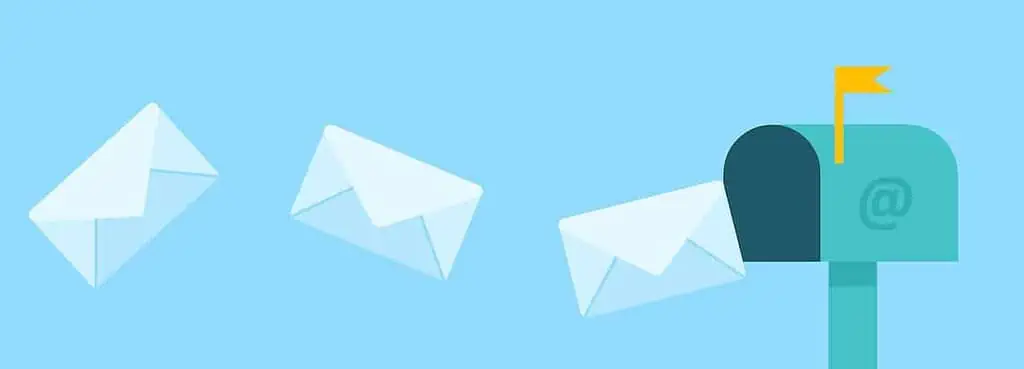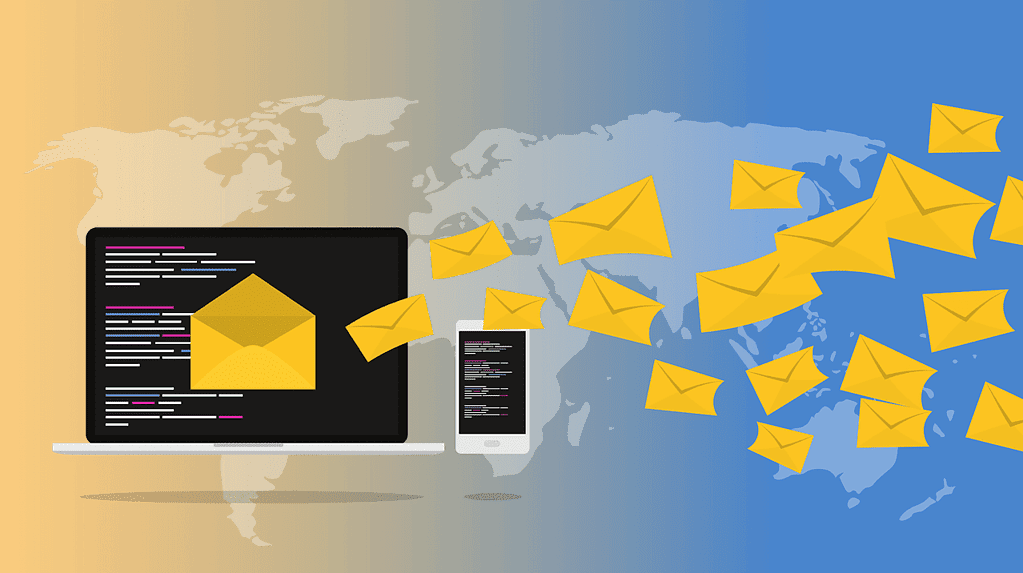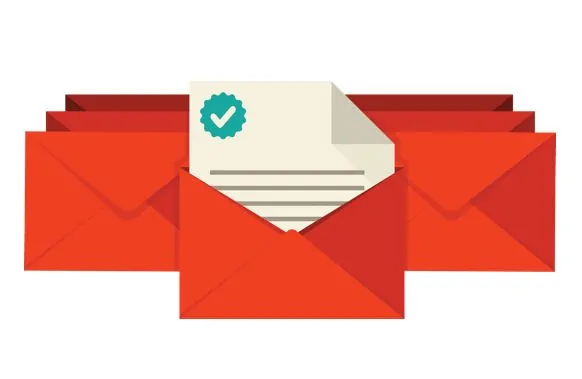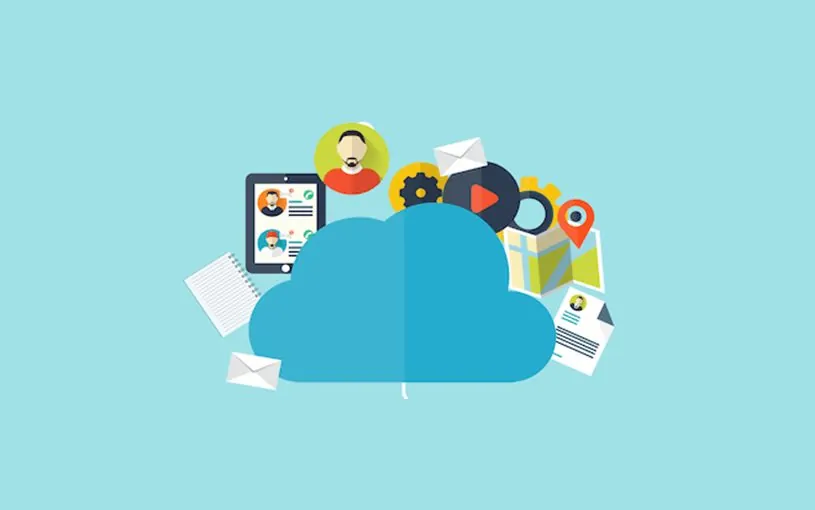Are you a website owner looking to increase your web traffic and boost your sales? Look no further than the power of email marketing! Many website owners underestimate the importance of building a strong email list, but the truth is that it can be a game-changer for your business.
In this post, we’ll explore the value of email marketing for website traffic, offer tips for gaining more newsletter subscribers, and provide advice on how to write effective newsletters that keep your readers engaged.
Table of Contents
Interesting facts and statistics about email marketing
The power of email marketing for website traffic cannot be overstated. Here are some facts and statistics that highlight just how effective it can be:
– According to a report by Campaign Monitor, email marketing has an ROI (return on investment) of 4400%, which means that for every dollar spent on email marketing, you can expect to earn $44 in return.
– A study by HubSpot found that email marketing is the most effective form of marketing for nurturing leads and converting them into customers.
– According to data from OptinMonster, personalized emails have an open rate of 29% compared to non-personalized emails, which have an open rate of 17%.
– A report by DMA (Direct Marketing Association) found that segmented and targeted emails generate 58% of all revenue.
– According to a survey by McKinsey & Company, email marketing is 40 times more effective at acquiring new customers than social media.
These statistics show just how powerful email marketing can be for driving website traffic and increasing sales. By implementing effective email marketing strategies, you can reach a wider audience, build relationships with your subscribers, increase brand awareness and ultimately grow your business.
We’ll take a closer look at data and statistics that prove the impact of email marketing on sales. Whether you’re a small business just starting out or a larger company looking to improve your digital marketing strategy, the tips and insights in this post can help you take your website traffic to the next level.
Why is email marketing such a strong method for businesses?
Have you ever wondered why email marketing is considered one of the most effective ways to drive traffic to your website? Well, let’s dig in and find out!
Firstly, email marketing is a cost-effective way to reach out to your audience. Compared to other forms of marketing, such as print ads or TV commercials, email marketing is relatively inexpensive. This means that even small website owners can benefit from it, allowing them to allocate their budget to other areas of their business.
Secondly, email marketing is a targeted approach to reach out to potential customers. When someone subscribes to your newsletter, it’s a clear indication that they are interested in your product or service. This means that your message is more likely to resonate with them and drive them to act, such as visiting your website or purchasing. You can nurture a newsletter subscriber to becoming a customer.
Thirdly, email marketing allows you to track your results easily and accurately. You can measure the success of your campaigns by tracking metrics such as open rates, click-through rates, and conversion rates. This data can help you refine your approach and make better decisions about your marketing strategy moving forward.
Lastly, email marketing is flexible and customizable. You can tailor your messages to your specific audience and use personalization to make your subscribers feel valued. This can help to build trust and loyalty with your audience, leading to more sales and repeat business.
What are the advantages and disadvantages of email marketing?
Email marketing has become an essential tool for website owners who want to increase their website traffic and sales. However, like any marketing strategy, email marketing has its own advantages and disadvantages. In this article, we will discuss some of the benefits and drawbacks of email marketing.
Advantages of Email Marketing:
1. Cost-effective: Email marketing is one of the most cost-effective marketing strategies available. It requires minimal investment compared to other marketing techniques like paid advertising.
2. Targeted audience: Email marketing allows you to send targeted messages to your subscribers based on their interests and preferences. This helps increase the chances of conversion.
3. Measurable: Email marketing provides you with various metrics such as open rate, click-through rate, bounce rate, and conversion rate. These metrics help you measure the success of your campaigns.
4. High ROI: Email marketing has a high return on investment (ROI). According to a study by DMA, for every $1 spent on email marketing, the average ROI is $38.
Disadvantages of Email Marketing:
1. Spam: One of the biggest challenges with email marketing is spam. If you send too many emails or irrelevant content, your subscribers may mark your emails as spam, which can harm your reputation.
2. Unresponsive subscribers: Not all subscribers are interested in your products or services. Some may ignore your emails or unsubscribe. This can affect your email engagement rates.
3. Technical issues: Technical issues like email deliverability, email design, and compatibility can affect the effectiveness of your email marketing campaign. It is important to ensure that your emails are compatible with different devices and email clients.
Despite the potential drawbacks, email marketing remains a powerful tool for website owners to increase website traffic and sales. By understanding the advantages and disadvantages of email marketing, you can develop a successful email marketing campaign that resonates with your audience.
What are the best practices for email marketing?
Email marketing can be a powerful tool to drive traffic to your website and increase sales. Here are some best practices to keep in mind:
1. Build your email list organically: Don’t buy email lists or use shady tactics to get people to sign up. Instead, offer something of value (like a free guide or discount code) in exchange for their email address. This way, you’ll attract people who are genuinely interested in your brand and more likely to engage with your emails.
2. Segment your audience: Not all subscribers are created equal. Divide your email list into segments based on demographics, behavior, or interests. This will allow you to send more targeted messages that resonate with each group.
3. Personalize your emails: Use the recipient’s name and other personal details to make your emails feel more personalized. This can increase open rates and engagement.
4. Keep it short and sweet: People are busy and don’t have time to read lengthy emails. Keep your messages concise and to the point. Use bullet points, subheadings, and images to break up the text.
5. Use a clear call-to-action: Every email should have a clear call-to-action (CTA) that tells the recipient what you want them to do. Whether it’s to visit your website, make a purchase, or sign up for a webinar, make sure the CTA is prominent and easy to follow.
6. Test and optimize: Don’t be afraid to experiment with different subject lines, emaillayouts, and messaging. Test different elements of your emails to see what works best with your audience, and use that information to continuously optimize your campaigns. By doing so, you’ll ensure that your email marketing remains effective over time.
What types of email campaigns should I use?
When it comes to email marketing, there are several types of campaigns that you can use depending on your goals and target audience. Here are a few popular options:
1. Newsletter: This type of campaign is great for keeping your subscribers up-to-date on your latest news, products, and promotions. A newsletter should be sent on a regular schedule (e.g. monthly or weekly) and should include valuable content that your subscribers will want to read.
2. Promotional: A promotional campaign is focused on promoting a specific product or service. This type of campaign is designed to generate sales and should include a clear call-to-action (e.g. “Buy Now”).
3. Drip: A drip campaign is a series of automated emails that are sent over time. This type of campaign is great for nurturing leads and guiding them through the customer journey. For example, you might send a series of emails to a new subscriber that introduces them to your brand, offers them a discount, and then promotes a specific product.
Automation is key here, which makes it easy to scale to many customers, but your communication will not be very personalized.
4. Event: If you’re hosting an event (e.g. a webinar, conference, or product launch), an event campaign can help you promote it and generate registrations. This type of campaign should include all the details about the event, along with a clear call-to-action to register.
Ultimately, the type of campaign you choose will depend on your goals and target audience. By experimenting with different types of campaigns, you can find the ones that work best for your business.
How can I improve my email deliverability?
Email deliverability is crucial for the success of your email marketing campaigns. You want to make sure that your emails are actually getting delivered to your subscribers’ inboxes, not ending up in their spam folders. Here are some tips to improve your email deliverability:
1. Build a high-quality email list: Make sure that everyone on your email list has given you permission to email them. Use double opt-in to confirm their subscription and keep your list updated by removing inactive subscribers.
2. Use a professional email service: Use a reputable email service provider that has a good reputation and is recognized by ISPs. This will ensure that your emails are sent from a trusted source and are less likely to be flagged as spam.
3. Create engaging and relevant content: Write compelling subject lines and use personalization to make your emails more engaging. Make sure the content is relevant to your subscribers and provides value to them.
4. Avoid spam trigger words: Avoid using words and phrases that are commonly associated with spam emails, such as “free,” “guaranteed,” “limited time offer,” etc.
5. Set up authentication: Use SPF, DKIM, and DMARC authentication to verify that your emails are coming from a legitimate sender. This will reduce the chances of your emails being marked as spam.
By following these tips, you can improve your email deliverability and increase the chances of your emails being opened and read by your subscribers.
How can I increase my email open rate?
If you’re using email marketing to drive traffic to your website, one of the most important metrics to keep an eye on is your email open rate. After all, if your subscribers aren’t even opening your emails, then you’re missing out on a huge opportunity to connect with them and drive more traffic to your site.
So, how can you increase your email open rate? Here are a few tips:
1. Write engaging subject lines: Your subject line is the first thing your subscribers see when they receive your email, so make it count! Use action-oriented language, create a sense of urgency, or even include a personalization token to catch their attention.
2. Segment your email list: If you’re sending the same email to your entire list, you’re likely missing the mark for some subscribers. By segmenting your list based on interests, location, or other factors, you can create more targeted campaigns that are more likely to be opened.
3. Test different send times: You may think you know the best time to send your emails, but your subscribers’ habits may surprise you. Experiment with different send times and days to see when you get the best open rates.
4. Keep your content relevant: If your subscribers signed up for your list because they’re interested in a certain topic, make sure your emails stay focused on that topic. If your content isn’t relevant to their interests, they’re less likely to open your emails in the future.
By following these tips, you can increase your email open rate and ultimately drive more traffic to your website. However, it’s important to remember that there’s no one-size-fits-all solution when it comes to email marketing. What works for one business may not work for another, so it’s always a good idea to test different strategies and see what works best for your audience.
It’s also important to keep in mind that building a strong email list takes time and effort. Don’t be discouraged if your list isn’t growing as quickly as you’d like it to. Instead, focus on providing value to your subscribers and creating engaging content that they’ll want to read and share with others. With a little patience and persistence, email marketing can be a powerful tool for driving website traffic and increasing sales.
How do I create an effective subject line?
Creating an effective subject line is crucial for the success of your email marketing campaigns. Here are some tips to help you craft a subject line that will grab your readers’ attention:
1. Keep it short and sweet: Your subject line should be concise and to the point. Aim for around 40-50 characters or less, as this is the maximum length that most email clients can display.
2. Use action-oriented language: Your subject line should compel your readers to take action. Use action verbs and power words to create a sense of urgency and excitement.
3. Personalize it: Personalization can greatly improve your email open rates. Use your reader’s name or other personalized information in your subject line to create a sense of connection and relevance.
4. Avoid spam trigger words: Certain words and phrases can trigger spam filters, so avoid using them in your subject line. Examples include “cash,” “money-back guarantee,” and “limited time offer.”
5. Test and optimize: Finally, it’s important to test and optimize your subject lines over time. Try out different variations and track your results to see what works best for your audience.
By following these tips, you can create subject lines that are more likely to grab your readers’ attention and drive engagement with your email campaigns. Good luck!
1. Mailchimp – One of the most well-known email newsletter providers, Mailchimp offers a user-friendly interface and a wide range of features. Pros include easy-to-use templates, integration with social media platforms, and detailed analytics. Cons include limited automation options and high prices for larger subscriber lists.
2. Constant Contact – Another popular option, Constant Contact offers customizable templates, automation options, and robust reporting and analytics. Pros include a simple drag-and-drop editor, a wide range of integrations, and excellent customer support. Cons include high prices for larger subscriber lists and limited design flexibility.
3. ConvertKit – Designed specifically for bloggers, ConvertKit offers features such as customizable forms, automation rules, and segmenting options. Pros include powerful automation options, easy segmentation of subscribers, and a user-friendly interface. Cons include limited design options and higher prices for larger subscriber lists.
4. AWeber – AWeber offers a range of templates, automation options, and detailed analytics. Pros include easy-to-use templates, a wide range of integrations, and excellent customer support. Cons include limited automation options compared to other providers and higher prices for larger subscriber lists.
5. Campaign Monitor – A popular option for larger businesses, Campaign Monitor offers a range of templates, automation options, and detailed reporting. Pros include the ability to create customized emails with a drag-and-drop builder, easy integration with other marketing tools, and advanced automation options. Cons include higher prices for larger subscriber lists and limited customer support.
6. GetResponse – GetResponse offers a variety of templates, automation options, and analytics. Pros include a user-friendly interface, advanced automation options, and a landing page builder. Cons include limited design flexibility and higher prices for larger subscriber lists. Website:
7. MailerLite – MailerLite offers easy-to-use templates, automation options, and detailed reporting. Pros include a user-friendly interface, affordable pricing, and a free plan for up to 1,000 subscribers. Cons include limited design options and customization options.
8. Drip – Drip offers powerful automation options, segmenting features, and detailed analytics. Pros include the ability to create complex automation workflows, advanced tagging and segmenting options, and a user-friendly interface. Cons include higher prices for larger subscriber lists and limited design options.
9. ActiveCampaign – ActiveCampaign offers a variety of templates, automation options, and detailed reporting. Pros include advanced automation options, segmenting features, and excellent customer support. Cons include higher prices for larger subscriber lists and a steep learning curve for beginners.
10. Sendinblue – Sendinblue offers a variety of templates, automation options, and detailed reporting. Pros include a user-friendly interface, affordable pricing, and powerful automation options. Cons include limited design options and customization options.
Email marketing is a powerful tool that can help website owners drive traffic and build a loyal audience. With the right email marketing strategy, you can reach your target audience, engage with them, and turn them into loyal customers. One of the key benefits of email marketing is that it allows you to communicate with your audience directly. Unlike social media, where algorithms can limit your reach, email allows you to reach your subscribers’ inboxes directly.
To get the most out of your email marketing campaigns, it’s important to focus on building your subscriber list. One effective way to do this is by offering valuable content that your audience will find useful. This could include exclusive discounts, access to premium content, or helpful tips and advice related to your niche. You can also use lead magnets like free eBooks or webinars to incentivize people to sign up for your newsletter. Another effective way to build your subscriber list is by optimizing your website to encourage signups. This could include placing signup forms in strategic locations on your website, offering a popup opt-in form, or including a call-to-action (CTA) in your content.
Once you’ve built your subscriber list, it’s important to focus on creating high-quality newsletters that will engage your audience. Some best practices for creating effective newsletters include personalizing your emails, using attention-grabbing subject lines, and including clear CTAs that encourage subscribers to take action.

Master Your Newsletter Communication
Actionable Steps to Keep Your Subscribers Engaged
To truly harness the power of email marketing for website traffic, it’s important to master your newsletter communication. This means creating content that not only captures your audience’s attention but also keeps them engaged and coming back for more. Here are some actionable steps you can take to keep your subscribers engaged:
1. Personalize your emails – Personalization is key to creating a connection with your subscribers. Use their names in your emails and segment your list based on their interests and behaviors.
2. Use attention-grabbing subject lines – Your subject line is the first thing your subscribers will see in their inbox. Make sure it’s eye-catching and entices them to open your email.
3. Provide valuable content – Your subscribers have given you permission to send them emails, so make it worth their while. Provide them with valuable content that they can’t find anywhere else.
4. Include clear CTAs – Your newsletter should have a clear call-to-action that encourages subscribers to take action. Whether it’s making a purchase, visiting your website, or sharing your content, make it easy for them to do so.
5. Test and analyze your results – It’s important to test different elements of your newsletter, such as subject lines and CTAs, to see what works best for your audience. Use analytics to track your results and adjust your strategy accordingly.
By mastering your newsletter communication, you can keep your subscribers engaged, build a loyal audience, and drive more traffic to your website. Don’t underestimate the power of email marketing, even if you’re a small website owner. According to data from Campaign Monitor, email marketing has an ROI of 4400%, making it one of the most effective marketing channels. Additionally, email subscribers are 3 times more likely to share content on social media than non-email subscribers, according to a study by QuickSprout.
Not only can email marketing bring in more website traffic, but it can also lead to increased sales. A study by DMA found that email marketing has an average ROI of $42 for every $1 spent. That’s a huge return on investment that cannot be ignored. By building a loyal audience through effective newsletter communication, you can increase your chances of converting subscribers into customers. So start building your email list and crafting high-quality newsletters today to harness the power of email marketing for your website.
What anti-spam laws should I be aware of when sending emails?
When it comes to email marketing, there are certain anti-spam laws that you need to be aware of to avoid getting into trouble. The most important one is the CAN-SPAM Act (Controlling the Assault of Non-Solicited Pornography and Marketing Act) of 2003, which applies to all commercial emails sent in the United States.
Under this law, you must include a clear and visible unsubscribe link in every email you send, and honor opt-out requests promptly. You also need to ensure that your subject line accurately reflects the content of your email, and that your email contains your physical mailing address.
It’s also worth noting that some states have their own email marketing laws, so be sure to check if any additional regulations apply to you. In general, it’s always a good idea to get explicit permission from your recipients before sending them any marketing emails. This can help prevent your emails from being marked as spam and damaging your reputation.
In short, always make sure your email marketing practices comply with the CAN-SPAM Act and any other applicable laws. This will help you build and maintain a positive relationship with your subscribers, and ultimately drive more traffic to your website.
Another important regulation for businesses to be aware of is the General Data Protection Regulation (GDPR), which came into effect in the European Union in 2018. This law aims to protect the privacy and personal data of individuals in the EU, including email subscribers.
Under GDPR, you must obtain explicit consent from your subscribers to collect and use their personal data for email marketing purposes. This means that you cannot pre-check boxes or assume consent – subscribers must actively opt-in to receive your newsletters.
GDPR also requires businesses to provide subscribers with clear and transparent information about how their data will be used, and to allow them to easily unsubscribe or update their preferences at any time.
Non-compliance with GDPR can result in significant fines and damage to your reputation, so it’s important to ensure that your email marketing practices are in line with these regulations.
In conclusion, email marketing is a highly effective way to increase website traffic and sales. With the right strategies and content, you can build a loyal audience and turn subscribers into customers. Just remember to follow anti-spam laws and regulations to avoid getting into trouble.
So what are you waiting for? Start building your email list and crafting high-quality newsletters today to harness the power of email marketing for your website. Your customers are waiting for you!





